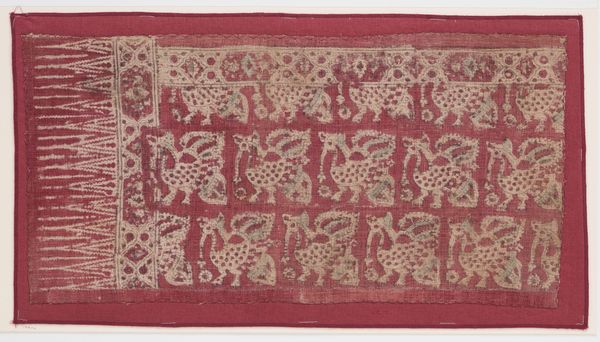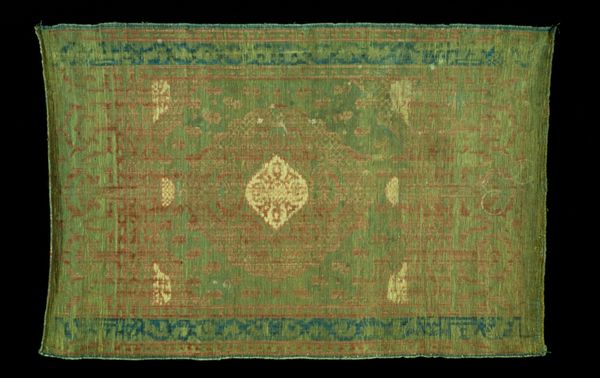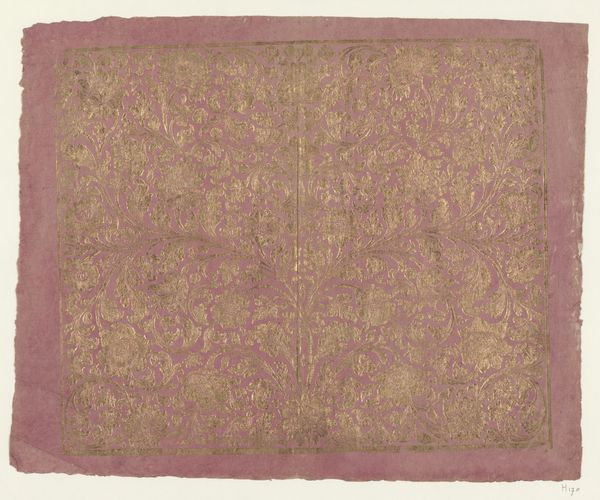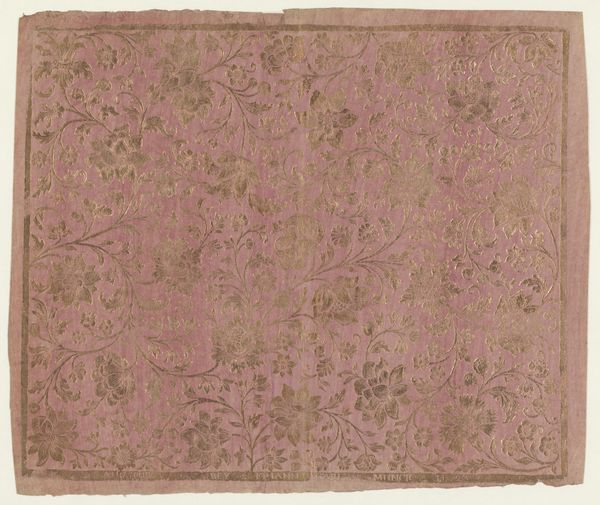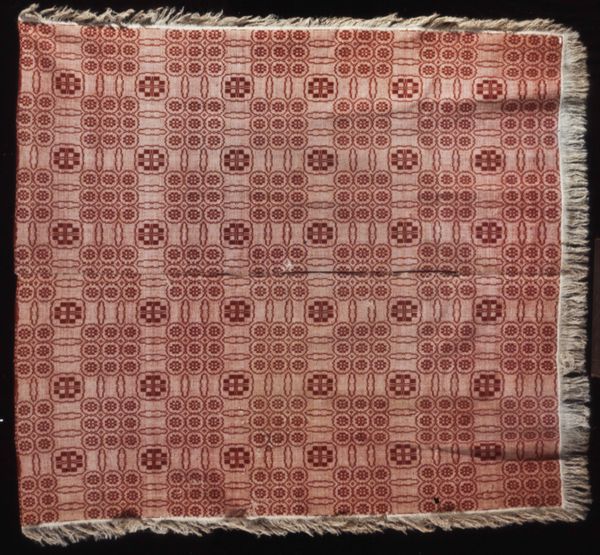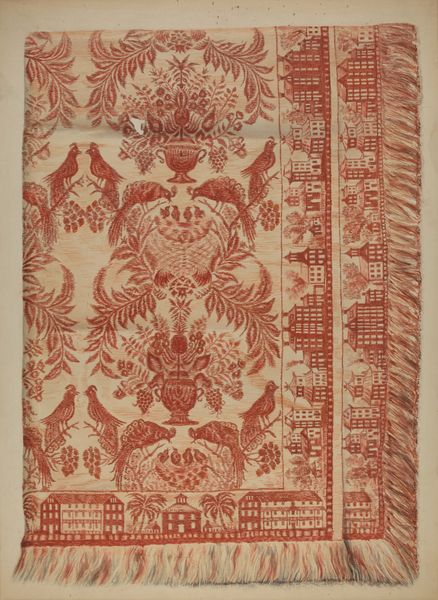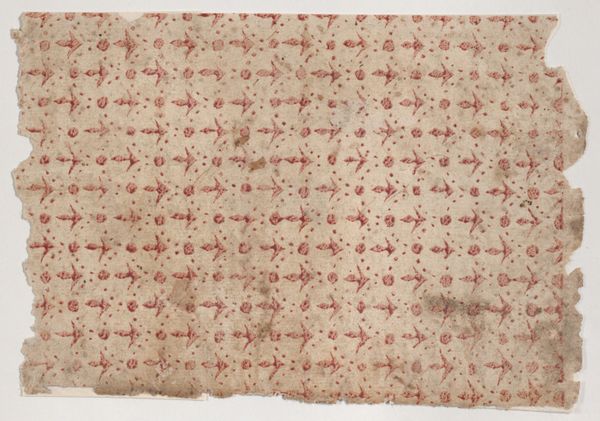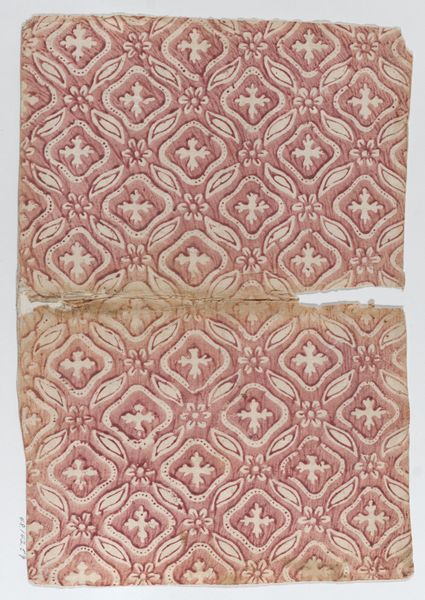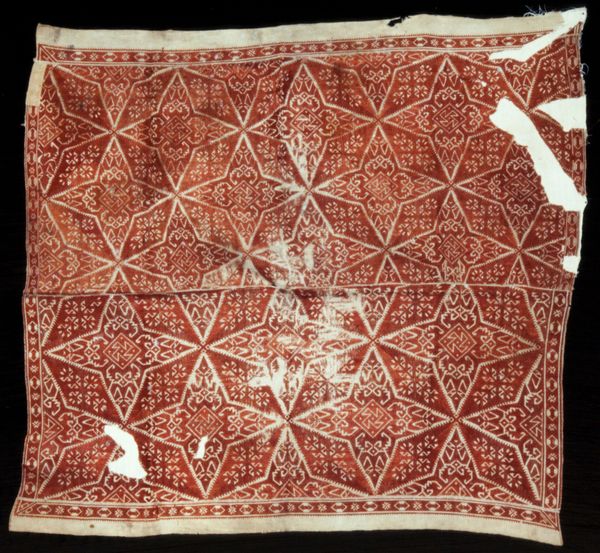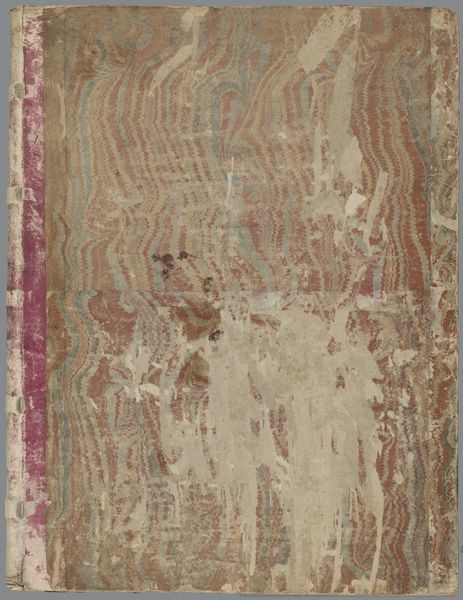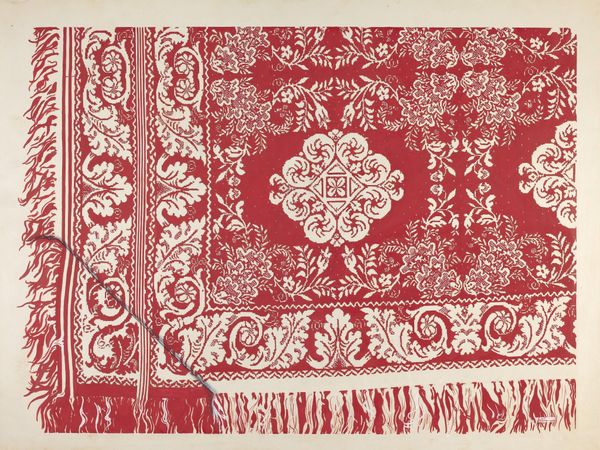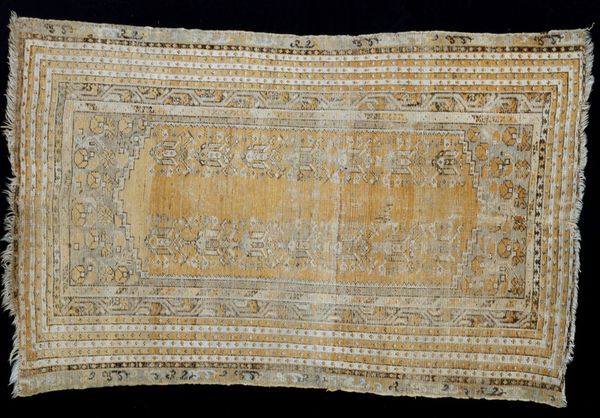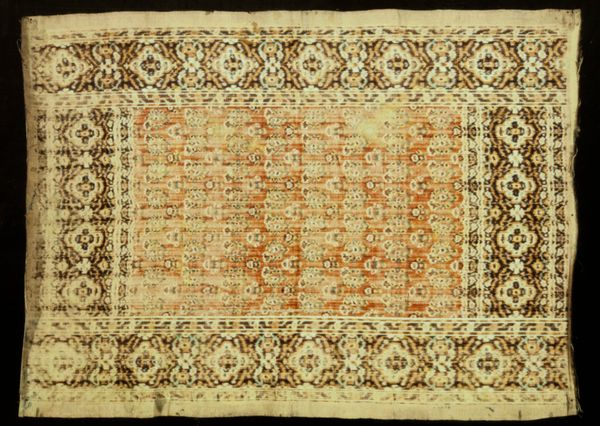
textile
#
textile
#
decorative-art
Dimensions: Gr. L. 27 x W. 7 1/2 inches (68.6 x 19.1 cm)
Copyright: Public Domain
Editor: This is “Fragment” by Grand Frères, dating back to 1809. It's a textile piece housed at the Metropolitan Museum of Art. I find the faded floral designs quite captivating. What do you see in this work in terms of its cultural or historical significance? Curator: It's fascinating, isn't it? Textiles, especially fragments like this, offer a glimpse into the socio-economic fabric of their time. Consider that this piece was created during the Napoleonic era; the floral motifs, potentially mass-produced, reflect changing consumption patterns among rising bourgeois. How do you think its function as potentially a decorative element impacted its value compared to say a tapestry made at court? Editor: That’s interesting. I guess tapestries at court are loaded with symbolism tied to political power, whereas this might be more about personal taste or following trends. So, the patterns aren't just pretty designs but indicators of wider social shifts? Curator: Precisely! The very existence of such patterned fabric suggests developing industries. The choice of red, the quality of dye…were these materials available to broader society, or were they still luxuries that communicated certain aspiration? The 'Fragment’ isn't simply a visual delight; it encapsulates evolving tastes and economies. Editor: So by studying what survives in museums, can reveal something of popular trends? Curator: Exactly, popular consumption is intrinsically connected to cultural significance! How tastes are constructed and become markers of social identity in any period. Think about contemporary fashion. What could that tell us? Editor: Hmm. This really makes me rethink decorative arts. I hadn't considered their political and economic context so deeply before. It goes beyond aesthetics, doesn't it? Curator: It absolutely does. Everyday objects often tell the most profound stories. Studying them offers a richer, more nuanced understanding of history.
Comments
No comments
Be the first to comment and join the conversation on the ultimate creative platform.
